We don't use intrusive ads and hope you disable your adblock.
Tag Index
-
 4-koma Manga (15) Yonkoma manga (4コマ漫画, four cell manga, or 4-koma for short), a comic-strip format, generally consists of gag comic strips within four panels of equal size ordered from top to bottom. (They also sometimes run right-to-left horizontally or use a hybrid 2x2 style, depending on the layout requirements of the publication in which they appear.) Though the word yonkoma comes from the Japanese, the style also exists outside of Japan in other Asian countries as well as in the English-speaking market.
4-koma Manga (15) Yonkoma manga (4コマ漫画, four cell manga, or 4-koma for short), a comic-strip format, generally consists of gag comic strips within four panels of equal size ordered from top to bottom. (They also sometimes run right-to-left horizontally or use a hybrid 2x2 style, depending on the layout requirements of the publication in which they appear.) Though the word yonkoma comes from the Japanese, the style also exists outside of Japan in other Asian countries as well as in the English-speaking market. -
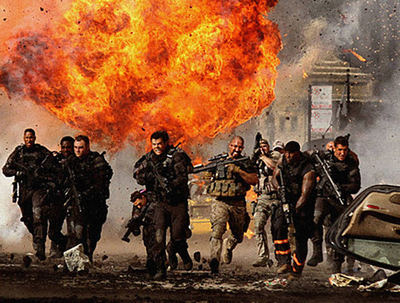 Action (132) Action anime usually involve a fairly straightforward story of good guys versus bad guys, where most disputes are resolved by using physical force. It often contains a lot of shooting, explosions and fighting.
Action (132) Action anime usually involve a fairly straightforward story of good guys versus bad guys, where most disputes are resolved by using physical force. It often contains a lot of shooting, explosions and fighting. -
Action Game (2) Any game where reflexes are the key to the gameplay, violence is optional.
-
 Adventure (56) Adventures are exciting stories, with new experiences or exotic locales. Adventures are designed to provide an action-filled, energetic experience for the viewer. Rather than the predominant emphasis on violence and fighting that is found in pure action anime, however, the viewer of adventures can live vicariously through the travels, conquests, explorations, creation of empires, struggles and situations that confront the main characters, actual historical figures or protagonists. Under the category of adventures, we can include traditional swashbucklers, serialized films, and historical spectacles, searches or expeditions for lost continents, "jungle" and "desert" epics, treasure hunts and quests, disaster films, and heroic journeys or searches for the unknown. Adventure films are often, but not always, set in an historical period, and may include adapted stories of historical or literary adventure heroes, kings, battles, rebellion, or piracy.
Adventure (56) Adventures are exciting stories, with new experiences or exotic locales. Adventures are designed to provide an action-filled, energetic experience for the viewer. Rather than the predominant emphasis on violence and fighting that is found in pure action anime, however, the viewer of adventures can live vicariously through the travels, conquests, explorations, creation of empires, struggles and situations that confront the main characters, actual historical figures or protagonists. Under the category of adventures, we can include traditional swashbucklers, serialized films, and historical spectacles, searches or expeditions for lost continents, "jungle" and "desert" epics, treasure hunts and quests, disaster films, and heroic journeys or searches for the unknown. Adventure films are often, but not always, set in an historical period, and may include adapted stories of historical or literary adventure heroes, kings, battles, rebellion, or piracy. -
Air Force (2) An air force, also known in some countries as an air army or air corps, is in the broadest sense, the national military organization that primarily conducts aerial warfare. More specifically, it is the branch of a nation`s armed services that is responsible for aerial warfare as distinct from an army, navy or other branch. Typically, air forces are responsible for gaining control of the air, carrying out strategic-bombing missions and providing support to surface forces. The term "air force" may also refer to a tactical air force or numbered air force, which is an operational formation within a national air force. Air forces typically consist of a combination of fighters, bombers, helicopters, transport planes and other aircraft.
-
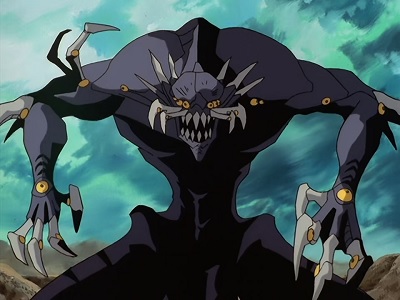 Alien (15) This entity or creature was born on another world than the main characters.
Alien (15) This entity or creature was born on another world than the main characters. -
American Derived (1) A work which was created as a continuation/remake of an American based franchise or cartoon series. These works are completely Japan original, but which lack roots within Japanese media. See also: cartoon remake
-
 Android (8) An android is a robot or synthetic organism designed to look and act like a human.
Android (8) An android is a robot or synthetic organism designed to look and act like a human. -
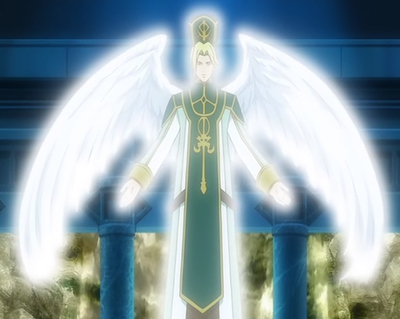 Angel (4) An angel is a supernatural being, said to be the messenger of God. They are often depicted as human beings with a pair of white feathered wings and sometimes with a halo. In contrast, a fallen angel who has turned evil will be depicted with black wings.
Angel (4) An angel is a supernatural being, said to be the messenger of God. They are often depicted as human beings with a pair of white feathered wings and sometimes with a halo. In contrast, a fallen angel who has turned evil will be depicted with black wings. -
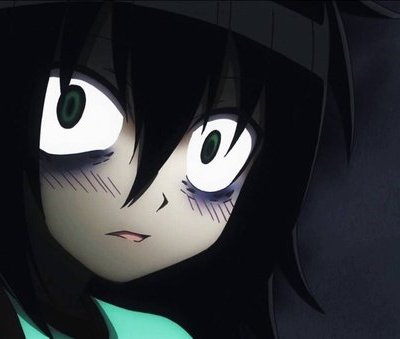 Angst (31) A feeling of general discomfort and uneasiness is present due to either trivial or more serious reasons, often accompanied by depression. Warning: may contain copious amounts of brooding and sighing. Etymology: "Angst" is a German word meaning fear or anxiety.
Angst (31) A feeling of general discomfort and uneasiness is present due to either trivial or more serious reasons, often accompanied by depression. Warning: may contain copious amounts of brooding and sighing. Etymology: "Angst" is a German word meaning fear or anxiety. -
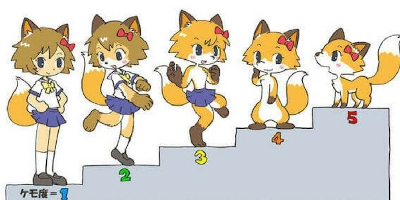 Anthropomorphism (7) Anthropomorphism is the attribution of uniquely human characteristics to non-human beings, inanimate objects, or natural or supernatural phenomena. If it`s an animal or an object (AI excluded) and it speaks and/or does other human-like things (dresses up) then we`re dealing with anthropomorphism. Anthropomorphism leans more on the animal-looking side when compared to juujin, which leans more on the human-looking side. Usage the tag image for reference, when tagging characters: * This is a juujin. * This is split between juujin and anthropomorphism, to be decided on a case-by-case basis, but most likely leans on the human-looking juujin side in most cases. * This is anthropomorphism; tag both anthropomorphism and the respective animal type. * This is anthropomorphism; tag both anthropomorphism and the respective animal type. * This is just a regular animal; do not tag juujin or anthropomorphism — only tag the actual animal type.
Anthropomorphism (7) Anthropomorphism is the attribution of uniquely human characteristics to non-human beings, inanimate objects, or natural or supernatural phenomena. If it`s an animal or an object (AI excluded) and it speaks and/or does other human-like things (dresses up) then we`re dealing with anthropomorphism. Anthropomorphism leans more on the animal-looking side when compared to juujin, which leans more on the human-looking side. Usage the tag image for reference, when tagging characters: * This is a juujin. * This is split between juujin and anthropomorphism, to be decided on a case-by-case basis, but most likely leans on the human-looking juujin side in most cases. * This is anthropomorphism; tag both anthropomorphism and the respective animal type. * This is anthropomorphism; tag both anthropomorphism and the respective animal type. * This is just a regular animal; do not tag juujin or anthropomorphism — only tag the actual animal type. -
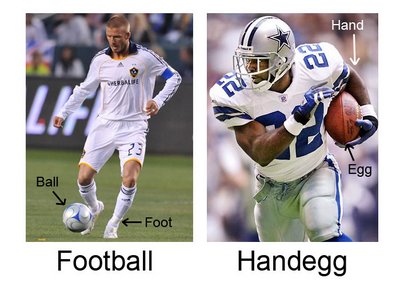 Association Football (2) Football is a sport that involves kicking a ball in order to score a goal, while the other team tries to stop you by kicking the ball in the other direction to score a goal of their own. In the United States, this sport is known as soccer; the inappropriately titled "American" football (which in fact is played with the egg-shaped "ball" being carried around) is some kind of rugby for babies.
Association Football (2) Football is a sport that involves kicking a ball in order to score a goal, while the other team tries to stop you by kicking the ball in the other direction to score a goal of their own. In the United States, this sport is known as soccer; the inappropriately titled "American" football (which in fact is played with the egg-shaped "ball" being carried around) is some kind of rugby for babies. -
Bakumatsu - Meiji Period (3) "Bakumatsu" (幕末, "Late Tokugawa Shogunate") occurred between 1853 and 1867 during which Japan ended its isolationist foreign policy and modernized from a feudal shogunate to the Meiji government. Bakumatsu represents the final years of the Edo period (when the Tokugawa shogunate ended) and preceded the Meiji era. The primary historical significance of Bakumatsu was the conflict between the pro-imperialist "Ishin Shishi" ("nationalist patriots"), and the shogunate forces, including the elite Shinsengumi ("New Selected Corps"). The Meiji Era (including Meiji Restoration) denotes the 45-year reign of Emperor Meiji, running from 23 October 1868 to 30 July 1912. During this time, Japan started its modernization and rose to world power status. Be aware that this category should only be assigned to anime that take place in Japan during the years mentioned above, and not to every anime that has samurai in it.
-
 Baseball (1) Baseball is like a complicated version of Rounders. It involves hitting a ball with a stick, then running around several bases placed in the form of a diamond on a field. Big in the US, and also in Japan.
Baseball (1) Baseball is like a complicated version of Rounders. It involves hitting a ball with a stick, then running around several bases placed in the form of a diamond on a field. Big in the US, and also in Japan. -
Basketball (0) Basketball is Netball for men, the real game that encourages dribbling and other such uncouth behaviour that was sanitised out of the ladies` version. However, it is itself woozy compared to Ulama, as the losing side are seldom publicly sacrificed.
-
 BDSM (1) A form of "kinky sex". The acronym BDSM derives from BD (bondage and discipline), DS (dominance and submission) and SM (sadism and masochism). BDSM usually characterizes with one side being superior (active) over the other (passive), with each side being one or more participants. Whips, chains, handcuffs, ropes, blindfolds are common elements of BDSM.
BDSM (1) A form of "kinky sex". The acronym BDSM derives from BD (bondage and discipline), DS (dominance and submission) and SM (sadism and masochism). BDSM usually characterizes with one side being superior (active) over the other (passive), with each side being one or more participants. Whips, chains, handcuffs, ropes, blindfolds are common elements of BDSM. -
Bishounen (9) A bishounen is a Japanese term literally meaning "beautiful youth (boy)" and describes an aesthetic that can be found in disparate areas in East Asia: a young man of effeminate beauty. While the beauty transcends gender, the character clearly has a male body; their gender is not ambiguous and there the character is not androgynous.
-
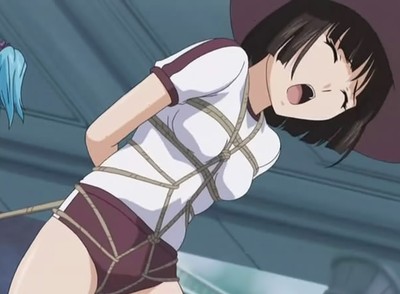 Bondage (1) Bondage is the use of restraints for the sexual pleasure of the parties involved. It may be used in its own right, as in the case of rope bondage and breast bondage, or as part of sexual activity or BDSM activity. When a person is sexually aroused by bondage, it may be considered a paraphilia, known as vincilagnia (from Latin vincio, to bind or fetter with chains, and lagneia, lust). [
Bondage (1) Bondage is the use of restraints for the sexual pleasure of the parties involved. It may be used in its own right, as in the case of rope bondage and breast bondage, or as part of sexual activity or BDSM activity. When a person is sexually aroused by bondage, it may be considered a paraphilia, known as vincilagnia (from Latin vincio, to bind or fetter with chains, and lagneia, lust). [ -
Bounty Hunter (1) A bounty hunter is one who hunts and captures targets (be it people, animals, etc.) for monetary gain, preferably without killing/destroying their target. Despite being illegal in most of the world today, it is a legal profession in the United States and Philippines (a former commonwealth of the US), who are known as "bail enforcement agents". If they are only and constantly hired to kill, they are likely an assassin.
-
 Boxing (1) Boxing is a combat sport in which two people, usually wearing protective gloves, throw punches at each other for a predetermined set of time in a boxing ring.
Boxing (1) Boxing is a combat sport in which two people, usually wearing protective gloves, throw punches at each other for a predetermined set of time in a boxing ring. -
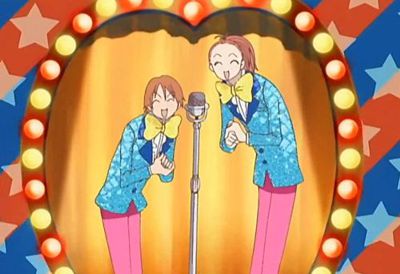 Comedy (168) Anime whose central struggle causes hilarious results. These stories are built upon funny characters, situations and events. A comedy anime is laced with humour and sets out to provoke laughter from the audience. Japanese humour can be a bit strange to westerners, so if you`re new to this type of humour, just bear with it; it`ll most likely grow on you if you`re a fan of other kinds of comedy.
Comedy (168) Anime whose central struggle causes hilarious results. These stories are built upon funny characters, situations and events. A comedy anime is laced with humour and sets out to provoke laughter from the audience. Japanese humour can be a bit strange to westerners, so if you`re new to this type of humour, just bear with it; it`ll most likely grow on you if you`re a fan of other kinds of comedy. -
Coming Of Age (24) In the strict sense the Coming of age describes a young person`s transition from adolescence to adulthood. In anime the term is used in a more general sense where the protagonists have to face a challenge, make an important decision in their life, take on responsibility, or learn a lesson, and by overcoming these obstacles they reach a higher level of maturity.
-
Conspiracy (9) The conspiracy thriller (or paranoid thriller) is a sub-genre of the thriller which flourished in the 1970s in the US (and was echoed in other parts of the world) in the wake of a number of high-profile scandals and controversies (most notably Vietnam, the assassination of President Kennedy, Chappaquiddick and Watergate), and which exposed what many people regarded as the clandestine machinations and conspiracies beneath the orderly fabric of political life. The protagonists of conspiracy thrillers are often journalists or amateur investigators who find themselves (often inadvertently) pulling on a small thread which unravels a vast conspiracy that ultimately goes "all the way to the top".
-
Contemporary Fantasy (39) Contemporary fantasy, also known as modern fantasy or indigenous fantasy, is a sub-genre of fantasy, set in the present day. It is perhaps most popular for its sub-genre, urban fantasy. These terms are used to describe stories set in the putative real world (often referred to as consensus reality) in contemporary times, in which magic and magical creatures exist, either living in the interstices of our world or leaking over from alternate worlds. It thus has much in common with, and sometimes overlaps with secret history; a work of fantasy in which the magic could not remain secret or does not have any known relationship to known history would not fit into this subgenre. Occasionally certain contemporary fantasy novels will make reference to pop culture. Novels in which modern characters travel into alternate worlds, and all the magical action takes place there (except for the portal required to transport them), are not considered contemporary fantasy. Thus, C.S. Lewis`s The Lion, the Witch and the Wardrobe, where all fantasy events take place in the land of Narnia which is reached via a magic wardrobe, would not count as contemporary fantasy; on the other hand, the part of The Magician`s Nephew, where the Empress Jadis gets to London, tries to take over the Earth and clashes with police and a crowd of cockneys, would qualify as such. Contemporary fantasy is also to be distinguished from horror fiction, which also often has contemporary settings. When encountering magical events and creatures, the protagonist of a horror novel is horrified, while the protagonist of a fantasy novel (contemporary or otherwise) is filled with a sense of joy and wonder. Horrifying events may happen, but the fundamental distinction is vital. In his preface to That Hideous Strength, one of the earlier works falling within this sub-genre, C.S. Lewis explained why, when writing a tale about "magicians, devils, pantomime animals and planetary angels", he chose to start it with a detailed depiction of narrow-minded academic politics at a provincial English university and the schemes of crooked real estate developers: "I am following the traditional fairy-tale. We do not always notice its method, because the cottages, castles, woodcutters and petty kings with which a fairy tale opens have become for us as remote as the witches and ogres to which it proceeds. But they were not remote at all to the men who first made and enjoyed the tales". The same is true for many of the later works in the genre, which often begin with a seemingly normal scene of modern daily life to then disclose supernatural and magical beings and events hidden behind the scenes.